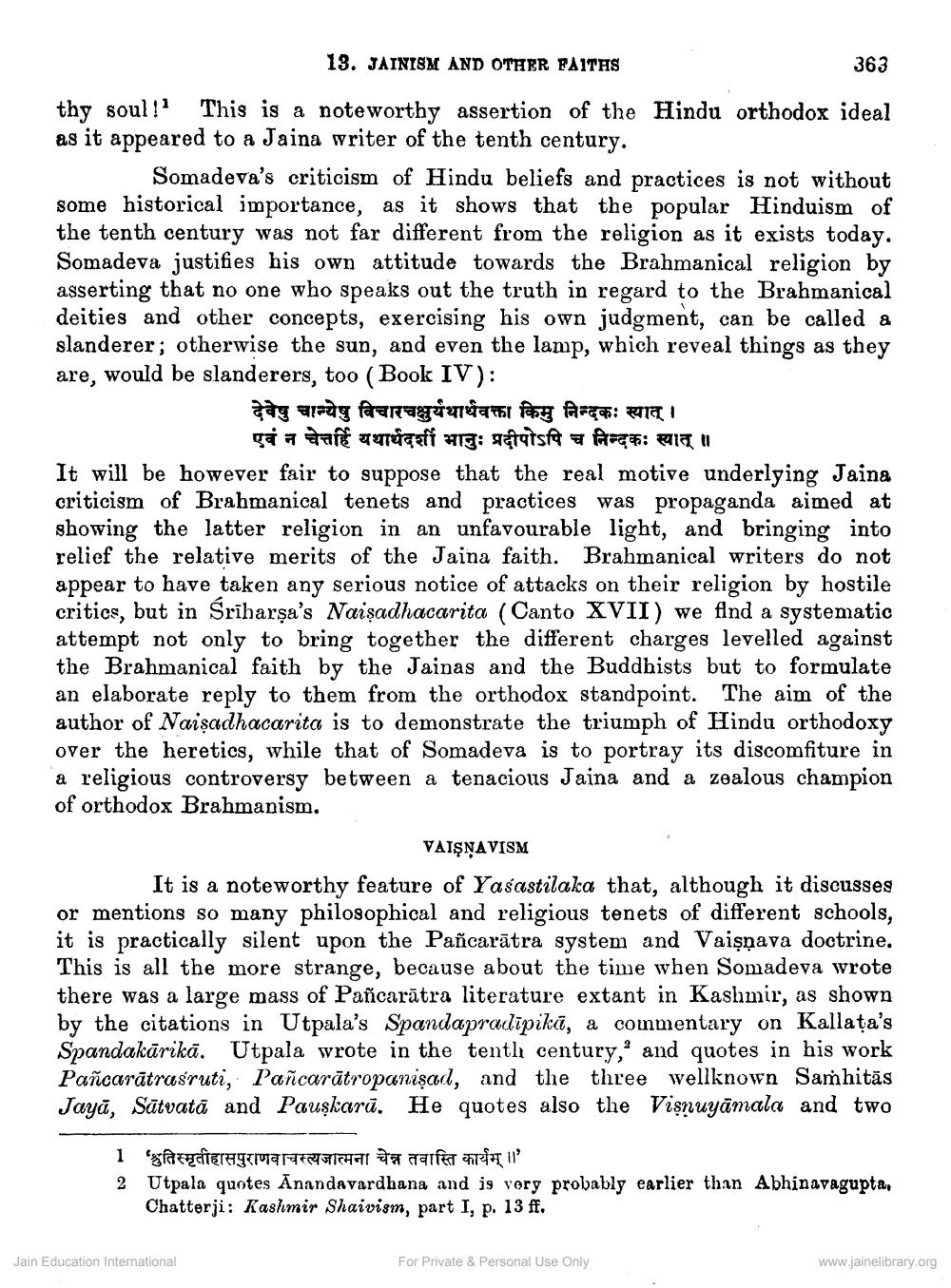________________
13. JAINISM AND OTHER FAITHS
363 thy soul!! This is a noteworthy assertion of the Hindu orthodox ideal as it appeared to a Jaina writer of the tenth century.
Somadeva's criticism of Hindu beliefs and practices is not without some historical importance, as it shows that the popular Hinduism of the tenth century was not far different from the religion as it exists today. Somadeva justifies his own attitude towards the Brahmanical religion by asserting that no one who speaks out the truth in regard to the Brahmanical deities and other concepts, exercising his own judgment, can be called a slanderer; otherwise the sun, and even the lamp, which reveal things as they are, would be slanderers, too (Book IV):
देवेषु चान्येषु विचारचक्षुर्यथार्थवक्ता किमु निन्दकः स्यात् ।
एवं न चेत्तर्हि यथार्थदर्शी भानुः प्रदीपोऽपि च निन्दकः स्यात् ॥ It will be however fair to suppose that the real motive underlying Jaina criticism of Brahmanical tenets and practices was propaganda aimed at showing the latter religion in an unfavourable light, and bringing into relief the relative merits of the Jaina faith. Brahmanical writers do not appear to have taken any serious notice of attacks on their religion by hostile critics, but in Sriharsa's Naişadhacarita (Canto XVII) we find a systematic attempt not only to bring together the different charges levelled against the Brahmanical faith by the Jainas and the Buddhists but to formulate an elaborate reply to them from the orthodox standpoint. The aim of the author of Naişadhacarita is to demonstrate the triumph of Hindu orthodoxy over the heretics, while that of Somadeva is to portray its discomfiture in a religious controversy between a tenacious Jaina and a zealous champion of orthodox Brahmanism.
VAIŞŅAVISM It is a noteworthy feature of Yasastilaka that, although it discusses or mentions so many philosophical and religious tenets of different schools, it is practically silent upon the Pancarātra system and Vaişpava doctrine. This is all the more strange, because about the time when Somadeva wrote there was a large mass of Pañcarātra literature extant in Kashmir, as sh by the citations in Utpala's Spandapradipika, a commentary on Kallata's Spandakārikā. Utpala wrote in the tenth century, and quotes in his work Pañcarătrasruti, Pañcarātropanişad, and the three wellknown Samhitās Jaya, Sātvatā and Pauskarū. He quotes also the Visnuyamala and two
1 'श्रुतिस्मृतीहासपुराणवाचस्त्यजात्मना चेन्न तवास्ति कार्यम् ।। 2 Utpala quotes Anandavardhana and is vory probably earlier than Abhinavagupta,
Chatterji: Kashmir Shaivism, part I, p. 13 ff.
Jain Education International
For Private & Personal Use Only
www.jainelibrary.org




